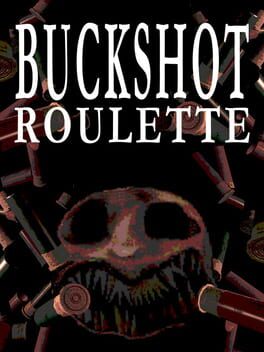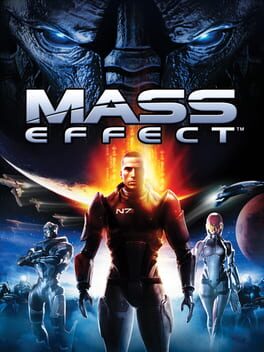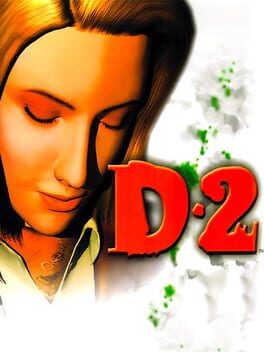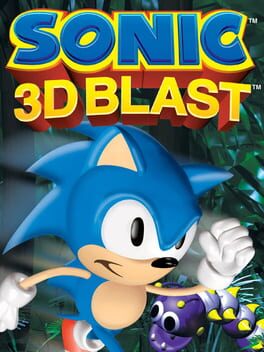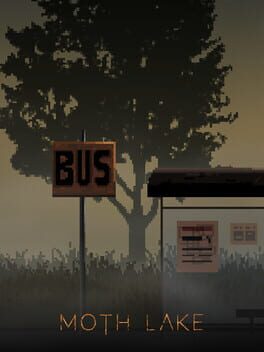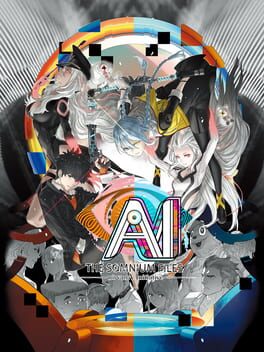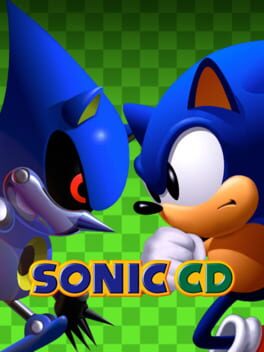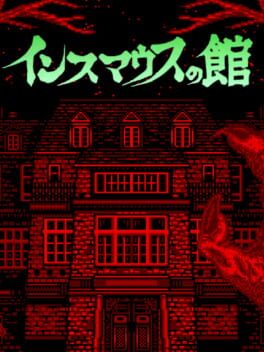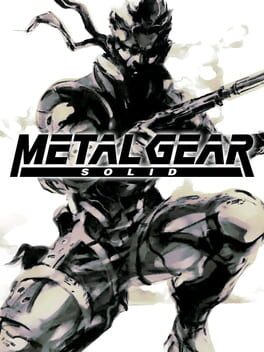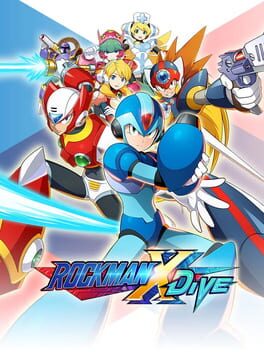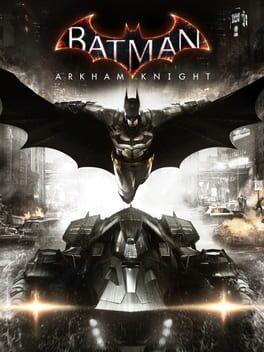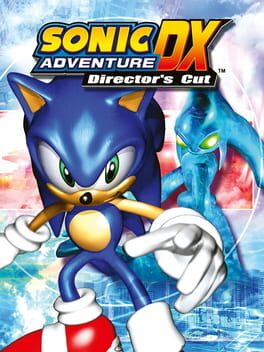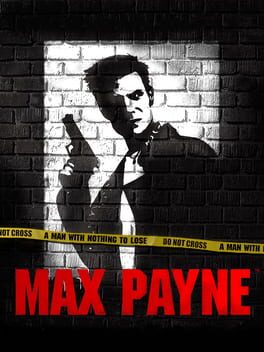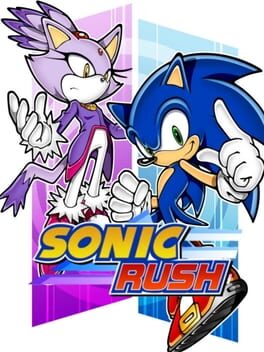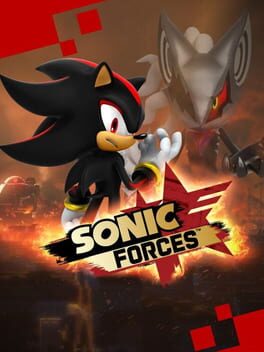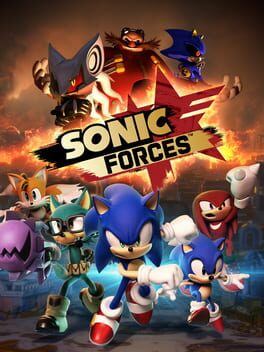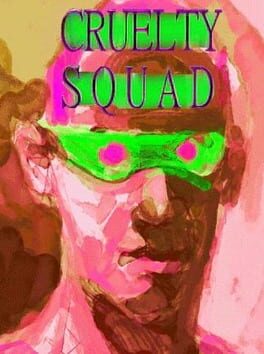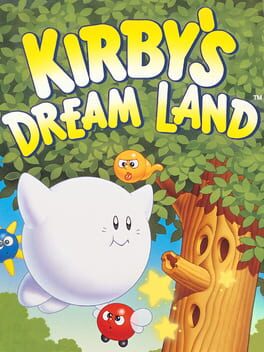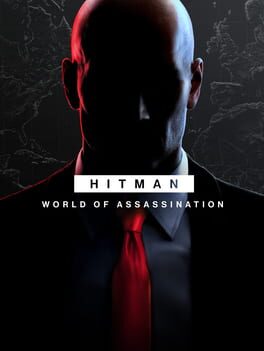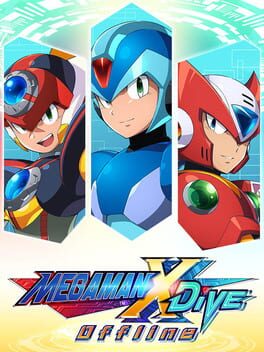This is my 8th playthrough of this game, and I was finally able to play it on Xbox 360. There is something so comforting about playing this on the 360, but it controls horribly. There is a lot of lagging issues, or my 360 is about to croak(she has red ringed before). Playing it on it's original console makes me feel nostalgic for an era of gaming I could not really participate in.
D2 is a Dreamcast survival horror kind of RPG game that has nothing to do with the original D and is the third game in the series.
Set in Canadian snowy mountains, you play as Laura (but different Laura from D) just trying to survive as people turn into weird plant monsters.
The game is a 4-disc behemoth and feels very inspired by Metal Gear Solid. In fact, I'd say it has more cutscenes than MGS. Whereas MGS used codec for a lot of it dialogue, D2 REALLY wants to be cinematic, featuring a lot of unique animations just for picking up things. It really didn't need that, and while it's unfortunate that it didn't sell well, I wonder if it even could sell enough for being a dreamcast exclusive considering how much money likely went into it.
The story is strange. Just the first 5 minutes of the game feature an evil wizard, a magic mirror, terrorism, and a meteor. It doesn't get much saner after. Most of the game is spent with characters and their motivations and thoughts, and while the voice acting is alright, the writing leaves a lot to be desired. For every interesting and touching scene there's at least one that feels like a cheap imitation of "can love bloom on the battlefield?" from MGS or a scene where characters suddenly become 10 times dumber.
There's something about this game that feels like Silent Hill titles. Not in terms of depth or scares, but in the fact that characters often talk past each other and everything feels very dream-like. The first person you meet traumadumps on you immediately and decides you're friends for life while Laura says absolutely nothing. In fact, you might get the impression that Laura is mute. She isn't. It's not a big reveal or anything, she just doesn't talk for 90% of the game, and knowing now that she COULD talk makes every cutscene even weirder in retrospect.
Just like the original D, the game tries to deal with heavy topics such as drug abuse, sexual violence, and others, but feels very unfocused. At times the game feels like it's really into enviromentalism, but it never commits. It also feels like sexual themes are there just for shock value, but they end up being really funny when a man just decides to act like a rapist for no reason or when you shoot what's literally a robot vulva in one of the boss fights. Weirdly enough there's nothing as shocking as the final flashback cutscene from the original D.
As for the gameplay, it's a weird mix of genres from point-and-click to RPG and I'd say nothing feels really that great. The biggest issue with the game is that it loves to waste your time. Each disc features fairly open maps, but progress is very convoluted, sometimes involving immediately going back or talking to one character 4 or 5 times (even as they fall asleep which I'd think would signify the end of dialogue tree). Random battles aren't scary and consist of you standing and shooting at monsters in first person, but I will say that the music and general vibe of the world work well.
Is it worth playing? I'd say no. Is it worth checking out through the magic of Youtube? Yeah. D2 is a weird game, often unintentionally funny, but charming nonetheless.
Set in Canadian snowy mountains, you play as Laura (but different Laura from D) just trying to survive as people turn into weird plant monsters.
The game is a 4-disc behemoth and feels very inspired by Metal Gear Solid. In fact, I'd say it has more cutscenes than MGS. Whereas MGS used codec for a lot of it dialogue, D2 REALLY wants to be cinematic, featuring a lot of unique animations just for picking up things. It really didn't need that, and while it's unfortunate that it didn't sell well, I wonder if it even could sell enough for being a dreamcast exclusive considering how much money likely went into it.
The story is strange. Just the first 5 minutes of the game feature an evil wizard, a magic mirror, terrorism, and a meteor. It doesn't get much saner after. Most of the game is spent with characters and their motivations and thoughts, and while the voice acting is alright, the writing leaves a lot to be desired. For every interesting and touching scene there's at least one that feels like a cheap imitation of "can love bloom on the battlefield?" from MGS or a scene where characters suddenly become 10 times dumber.
There's something about this game that feels like Silent Hill titles. Not in terms of depth or scares, but in the fact that characters often talk past each other and everything feels very dream-like. The first person you meet traumadumps on you immediately and decides you're friends for life while Laura says absolutely nothing. In fact, you might get the impression that Laura is mute. She isn't. It's not a big reveal or anything, she just doesn't talk for 90% of the game, and knowing now that she COULD talk makes every cutscene even weirder in retrospect.
Just like the original D, the game tries to deal with heavy topics such as drug abuse, sexual violence, and others, but feels very unfocused. At times the game feels like it's really into enviromentalism, but it never commits. It also feels like sexual themes are there just for shock value, but they end up being really funny when a man just decides to act like a rapist for no reason or when you shoot what's literally a robot vulva in one of the boss fights. Weirdly enough there's nothing as shocking as the final flashback cutscene from the original D.
As for the gameplay, it's a weird mix of genres from point-and-click to RPG and I'd say nothing feels really that great. The biggest issue with the game is that it loves to waste your time. Each disc features fairly open maps, but progress is very convoluted, sometimes involving immediately going back or talking to one character 4 or 5 times (even as they fall asleep which I'd think would signify the end of dialogue tree). Random battles aren't scary and consist of you standing and shooting at monsters in first person, but I will say that the music and general vibe of the world work well.
Is it worth playing? I'd say no. Is it worth checking out through the magic of Youtube? Yeah. D2 is a weird game, often unintentionally funny, but charming nonetheless.
BEAT ORANGE STAKE!!!!!! And completed the collection too :) think this'll probably be it for this game for a while, I've been getting a little tired of it lately and im glad I could cap it off with what feels like a conclusive win :)
I haven't gotten this into a roguelike maybe ever and I think it's just cuz it lays bare what is, for me, the "fun part": putting together builds and watching number go up. I think I bounce off roguelikes a lot because I'm less interested in the "moment-to-moment execution" kind of difficulty when it feels like it gets in the way of me understanding what I have at my disposal and getting to try out different combos.
I haven't gotten this into a roguelike maybe ever and I think it's just cuz it lays bare what is, for me, the "fun part": putting together builds and watching number go up. I think I bounce off roguelikes a lot because I'm less interested in the "moment-to-moment execution" kind of difficulty when it feels like it gets in the way of me understanding what I have at my disposal and getting to try out different combos.
A significantly better game than it's predecessor. The "it's not a bug, it's a feature" design is very enjoyable and often hilarious and the game has plenty to do, packed with frequent good bits and a map that reacts to things that you do.
However, a few of the bits are lame, some of the objectives are tedious and even frustrating, and the entire swapping inventory system could have used some quality of life things like savable presets and the items themselves aren't too interesting past a certain point and/or threshold. Also, the end of the game was disappointing.
Worth the 7 hours.
However, a few of the bits are lame, some of the objectives are tedious and even frustrating, and the entire swapping inventory system could have used some quality of life things like savable presets and the items themselves aren't too interesting past a certain point and/or threshold. Also, the end of the game was disappointing.
Worth the 7 hours.
This game is intresting mostly because it's actually a game once again. The internet describes it as a horror game but the main premise is exploring hallways and there are monsters? So I guess kinda horror but more so a first person shooter. Strange game but I kinda love it for its charm might give this a replay later this week if I get bored.
A fun combo of the MG2 MSX and MGS1 PS1 great sprite art , fantastic music, a non canon but fun story that asks what if MG2 didn't happen tho I do wonder if there was supposed to be more considering the ending seems to imply there was going to be more games in future guess koji pro got too bucy with MGS 2 ZOE and boktai to put any focus into it still if you're an MGS fan this is one to check out
Arkham Knight is the pinnacle of the bloated AAA open-world design. A beautifully world that rivals the Gotham of the Tim Burton's movies but has not a single meaningful moment. A real exercise in futility.
Ubisoft might get the most shit for this but Rocksteady truly beat them at their own game here. Not even them would be sadistic enough to hide over 200 pointless collectibles behind so many stupid puzzle
I can't even say if I enjoyed myself while playing this. Part of me had fun gliding, the other wanted to throw the controller at the screen every time I had to listen to one of the villains talk.
This game is a textbook on how to NOT write villains. Not once I thought they were menacing or dangerous, most of the times I just wanted them to shut up. And Joker is the worst example of this, he shouldn't even have been in this game. Feels almost like they were afraid the game wouldn't work without him, so they just threw up the flimsiest excuse for him to be in it and gave Mark Hamill a compilation of all the worst lines of dialogue he would have on his career until The Last Jedi.
Anyway, Batman is a shitty superhero, when are they releasing a decent Hellboy game? I should have just played the Blacksad game instead.
Ubisoft might get the most shit for this but Rocksteady truly beat them at their own game here. Not even them would be sadistic enough to hide over 200 pointless collectibles behind so many stupid puzzle
I can't even say if I enjoyed myself while playing this. Part of me had fun gliding, the other wanted to throw the controller at the screen every time I had to listen to one of the villains talk.
This game is a textbook on how to NOT write villains. Not once I thought they were menacing or dangerous, most of the times I just wanted them to shut up. And Joker is the worst example of this, he shouldn't even have been in this game. Feels almost like they were afraid the game wouldn't work without him, so they just threw up the flimsiest excuse for him to be in it and gave Mark Hamill a compilation of all the worst lines of dialogue he would have on his career until The Last Jedi.
Anyway, Batman is a shitty superhero, when are they releasing a decent Hellboy game? I should have just played the Blacksad game instead.
This review contains spoilers
I had no idea what to expect from Yakuza 0. Then again, I’d be willing to bet that a sizeable number of us yanks over in the Western hemisphere also couldn’t anticipate the content of Yakuza 0 when it shipped out overseas two years after its initial release in 2015. The long-running franchise already had an impressive tenure as one of Sega’s exemplary new IPs by the mid-2010s, created after their glorious reign as a console war contender tragically crumbled with the Dreamcast. However, Yakuza’s role in maintaining Sega’s relevance as a humble game developer seemed to only gain traction in their native Japan. This lack of international interest or awareness in Yakuza is probably the reason why it took two whole years for Sega to publish Yakuza 0 outside of Japan in the first place. In fact, Japanese gamers were so seasoned with the series at this point that it behooved Sega to craft a prequel story taking place before the sequential events detailed over the course of five Yakuza titles, hence the “zero” in the title that signifies its primeval placement in Yakuza’s chronology. While Yakuza veterans should ideally be intrigued in witnessing how the characters they’ve come to know (and love?) received their proverbial spots in their amateurish younger days, Yakuza 0 is also a serendipitous title to play for new players such as me to get acquainted with the franchise because the story events occur the earliest in the series timeline. However, plenty of Yakuza fans do not advise diving into the Yakuza series from the Yakuza 0 end despite its convenient, spoiler-free position in the series. There’s a reason why Yakuza 0 was the game that finally reverberated the series' notoriety around the globe, for it’s deemed to be the peak of the franchise in terms of narrative, gameplay, and character conceptualization. I will fully trust the reasoning behind the warnings of those with more experience than I do, but it’s far too late now. I don’t doubt that Yakuza 0 is the best game the series offers, for it is one of the most immersive and engaging video games I’ve played in recent memory.
Of course, one thing I naturally expected in Yakuza 0 with contextual clues from its title is that the game would involve the gilded Japanese crime organization in some capacity, so I could reasonably anticipate some gangster shit to be a-brewin'. The first instance of some mob activity in Yakuza 0 takes place on a brisk December evening in the Kamurocho prefecture of Tokyo in 1988, where the mainstay series protagonist, Kazuma Kiryu, is roughing up a civilian who did not pay his dues to the Dojima crime family of which he is affiliated. While we clearly witness that Kiryu only bruised this man to send a message, he then has to explain his actions when the man is found dead with a bullet hole in his head. When the newspapers stamp the man’s murder on the front pages and air its coverage on primetime television outlets with Kiryu pinned as the primary suspect, he ultimately steps down from his position as a grunt within the Yakuza as a preliminary caution to protect his guardian and incarcerated Tojo Clan captain, Shintaro Kazama. All the while, the higher-ups in the Dojima family are working tooth and nail to procure the rights to the coveted “empty lot” located in an unkempt Kamurocho back alley in the interest of bolstering the career of their family patriarch, Sohei Dojima. However, their primary obstacle in achieving this lucrative goal is local real estate magnate, Tetsu Tachibana, and the company of his namesake, who employs Kiryu in his firm to help clear his name of the murder in exchange for his insight and experience as a Yakuza member to use against them. One prevalent sentiment on Yakuza uttered aplenty before I played Yakuza 0 is that the series has a pension for silliness, even at the crux of its narrative regarding the heated acquisition involved with this dinky space that wouldn't even fill the perimeter of a state college dorm room. However, those who snicker at these dignified businessmen making such a big, billion-dollar fuss over a 500- square-foot slab of land have not seen The Sopranos. Potential properties relating to business ventures that seem minuscule from the outside looking in always seem to cause bickering and in-fighting within the mafia syndicate. The results of each civil war power struggle between the families over their capital resources tend to result in catastrophic consequences. If this source of conflict is substantial enough for what is widely considered to be the greatest television series of all time, then why would a mafia-oriented video game series that echoes the same themes be an exception to the rule?
Besides moonlighting as Tachibana’s new and valuable streetwise asset, severing ties from the Yakuza has granted Kiryu an abundance of free time. During the day and in the immediate after-hours of dusk, Kiryu is now free to frolic merrily in Kamurocho like Antoine Doinel through the streets of Paris. Actually, a more apt metaphor for Kiryu’s extensive leisure period is that he’s a turd crapped out from the Tojo Clan’s colon that is now free to swim in the toilet bowl that is Kamurocho. Given that Tokyo is the most populated city in the world, much less in Japan, I’m certain that a wide percentage of its prefectures are charming, safe, and exude that spectacle of city magic better than any metropolitan area in the world. However, one can imagine why an area modeled after Tokyo’s red-light district wouldn’t elicit the same sense of urban whimsy. While Kamurocho’s sleaze and prevailing Yakuza corruption aren’t exactly inviting to tourists who are already experiencing uneasy feelings of culture shock, those who seek a thrilling “city that never sleeps” type of atmosphere from their urban adventures will be satiated by Kamurocho’s tower-to-tower, luminescent neon glow with a full-scaled brightness five times the scale of Time Square in New York City. Kamurocho isn’t for the feeble, faint-of-heart city-goers feeling free enough to twirl themselves around and throw their hat up in the air with reckless abandon. One must constantly take a second glance in every direction to keep cautious of any salacious vagabonds soliciting their bodies or drunken thugs ready to steal your wallet once they’ve knocked you unconscious. One of the city’s more noteworthy residents is a street walker with the nickname “Mr. Shakedown,” a roided-out freak of nature who makes his living by acting as the adult equivalent of a schoolyard bully, frisking everyone for their paychecks instead of some meager lunch money. If he isn’t indicative of Kamurocho’s lawlessness, I don’t know what would serve as a better example. The aura of danger exuding around the entirety of Kamurocho will keep anyone with the will to survive on constant pins and needles. Still, a byproduct of one’s constant alertness is an acquired taste of exhilaration, which is what I always felt while darting around Kamurocho’s alleyways. However, all of Kamurocho’s energetic hustle and bustle is packed together like a can of sardines thanks to the grid-based city design, which makes the layout difficult to commit to memory.
Since Kiryu’s face is frozen to an ultra-serious, ice-cold stoicism, one would think the various vagrants in Kamurocho would give this man a wide berth. The belligerent man who demanded an apology from Kiryu after he accidentally brushed against him nearly turned to stone when Kiryu glared back at him with that sober, stern visage of his. Even though Kiryu carries the demeanor of someone who shan’t be fucked with, this somehow ESPECIALLY paints him as a target for assaults and harassments galore. Groups of delinquents, hooligans, goons, bikers, and every other classification or pejorative term for street gangs uttered by the men of Dragnet and Dirty Harry alike will bumrush Kiryu at the soonest peripheral glance, engaging in the combat portion of the game. It is here with this aspect of Yakuza 0’s gameplay that my preconceived notions that the series was another open-world game cut from the cloth of Grand Theft Auto were proven to be null and void. Instead, Yakuza is an example of a 3D evolution of the beat 'em up genre in the vein of something like River City Ransom. Once the group of street toughs closes in on Kiryu, a fight sequence commences between him and at least a trio of violent scumbags, with crowds of enthralled people accumulating around the scene as a circular ring of inescapability from these bouts. To continue minding Kiryu’s business, he must beat the everloving tar out of his assailants. While the weapons Kiryu can purchase are certainly potent, their ephemeral degradability forces Kiryu to fall back on his fists and kicks to defend himself, and his hand-to-hand combat is divided into three distinct styles. Brawler Style is a balanced martial art with average speed and damage, so it’s ideal for new players who need to acclimatize to the mechanics. Rush Style trades the offensive output of the brawler style for speed, with Kiryu delivering a fury of lightning-fast punches and kicks along with a swifter pace of dodge maneuverability. At the other end of the spectrum, the Beast Style sees Kiryu lumbering around the arena with the wide, upright stance of a pissed-off grizzly bear, brandishing critical heaps of damage to multiple enemies with a brutal clotheslining. I’m sure one will notice that each style also has a distinct and colorfully fiery aura that emanates over Kiryu in battle. This aesthetic flame signifies that Kiryu can execute a “heat move,” a cinematic sequence that dishes out massive amounts of damage to either a single enemy or a whole group. Kiryu can also pick up a blunt object off the street and incorporate it into this deadly super move. The most common miscellaneous items seem to be traffic cones, flag poles, and some poor bastard’s bicycle that Kiryu can completely shatter into pieces over an enemy. Some of these heat moves are situational, and some are inherent reflexes improvised by Kiryu in tight situations. Unlocking the others requires the additional tutelage of the person who inspired Kiryu’s use of each style when Kiryu funnels an exorbitant amount of money into the branching move pool for each style in the menu. The foreign, nomadic hedonist Bacchus will teach Kiryu the ways of the Brawler Style, the street hustler Kamoji for the Rush Style, and Miss Tatsu, the cutest bounty hunter in Tokyo, will have Kiryu reprimand those with outstanding loans using the Beast Style. As diverse as Kiryu’s battle potency is using a roulette of these three styles, the combat of Yakuza 0 admittedly boils down to a combination of two controller buttons along with the occasional grab. The encounters with these gangs are so frequent and trivial that the player is guaranteed to get sick of dealing with them, even avoiding saving save the skin of some defenseless dude writhing on the ground or a potential rape victim because of how the combat wears out its welcome. Still, the flashiness of the combat with the slapstick appeal of the heat moves will amuse the player for quite a while, and at least the mechanics for each of the fighting styles are all buttery smooth and responsive.
After putting these jokers in their place while they grovel for forgiveness, Kiryu can return to his normal trajectory. A salient, pink marker will be jotted on both the map and the radar signifying where Kiryu must travel to further the plot, which will usually involve a slew of lengthy cutscenes followed by a horde of enemies and or a boss with different situations depending on the current circumstances of the story. One of the only instances that leaves Kiryu directionless is the beginning of the second chapter, and the rare lack of a concise objective to dart towards is really a ploy from the developers to subtly highlight the optional substories. Upon walking about Kamurocho’s various places of interest or really any insignificant slice of any sidewalk, a cutscene will periodically ensue that sets up a predicament for one of Kamurocho’s less oppugnant denizens. Once Kiryu’s interest is piqued, he will talk to the person in order to gather more context on this person’s problem and decide whether or not he’d like to aid them in solving it. Technically, there is no tangible reward that comes with engaging with these substories, and they distractingly deviate from the main story by design. Still, any player who glosses over these minor slices of life around Kamurocho is doing themselves a major disservice because the substories are a riot. A few substories are conditional with fulfilling a friendship arc, coinciding with a meter that fills gradually with visitations. These include befriending a man who naively sells non-hallucinogenic cooking mushrooms on dingy street corners to a man with the title “Mr. Libido,” whose inexhaustible sex drive has to be fueled by some kind of photosynthetic process. Sixty substories may seem like an overwhelming amount of content to prolong the Yakuza 0 experience, but each minuscule window into the lives of Kamurocho’s average city dwellers expands the scope of the setting beyond the shallow parameters of a sinful playground wonderfully.
After all, arguably the core ethos of the open-world genre is to vicariously supplement reality with an extravaganza of activities. Even if the substories were left on the cutting room floor of the development, Yakuza 0 would still offer enough distractions from furthering the main plot for hours, even days, of playtime. Every facet of Yakuza 0 is compartmentalized into a comprehensive checklist. If the player is so inclined, they can order every menu item from a smattering of Kamurocho restaurants that restore Kiryu’s health, purchase mystery items from vending machines at random, and rent a room to watch a softcore porn videotape with a selection of thirty different girls. No, there is no interactive masturbation aspect to this sequence, as Kiryu's deep breath when the camera zooms in on a box of tissues when the video ends already breaks the sanctity of character-player interactivity as is. Still, all of these extracurricular outings are only the tip of Yakuza 0’s completionist iceberg, and a plethora of its non-linear diversions from the intended progression are indeed gamified. The amount of minigames featured in Yakuza 0 is so stacked that I’m not sure where to even begin with discussing them. For starters, classic arcade titles like Space Harrier and Out Run are fully playable in two different SEGA HI-TECHLAND arcade buildings, which means the developers have retreated to a blissful, nostalgic alternate universe where they held a monopoly on the video game industry. Other minigames that don’t involve the developers jerking off to their parent company's their glory days are dancing and karaoke, which both integrate rhythm game mechanics to effectively show off an unexpectedly flamboyant and expressive side of Kiryu. Mixing and matching the appropriate build to win the pocket circuit races is far more complicated than expected, and the pre-Tinder relic that is the telephone club sessions are as pulse-pounding as they probably were for anyone trying to get laid in real life back in the 1980s. As fun little larks these minigames are intended to be, one popular topic of discussion among Yakuza fans is which ones they despise. I definitely have my own selection. The batting cages instilled too strict of an error margin, and Shogi/Mahjong was too cerebral to be relegated to a minigame. Really, the notorious pick among the fans of which I’m echoing the contempt just as fervently are the catfights, betting on which scantily-clad tart will beat the other in a wrestling match. Considering that my luck was never in favor of any of the matchups I participated in despite always selecting the girl with the more promising stats, I’m fully convinced that this is one minigame where the odds are totally rigged against the player. I even disliked a number of minigames I mentioned beforehand, but grew to enjoy them as I became accustomed to their mechanics through practice. This learning curve that each minigame presents is a testament to their richness, something that typical minigames rather lack. Each minigame in Yakuza 0 (that isn’t RNG contingent) is impressive enough to hold its own as an individual game separated from the base game it's supporting.
One particular secondary piece of Yakuza 0 side content that I’d classify as a “macro game” is the overarching business side story. While Japan’s economy in the late 1980s was evidently booming to the point where any street commoner would burst with money like a yen pinata when Kiryu smacks them around, the finances gained from fighting were not sufficient enough to maximize his fighting prowess in the menu. To fully endow Kiryu, he must make enough money to qualify for the lofty “Forbes Under 30” bracket. Capitalizing on his new occupational venture as a real estate agent, Kiryu establishes his own subsidiary company with the experienced aid of an older man named Yamanoi. Besides raking in gonzo bucks, the primary objective behind this pursuit is to dethrone the “Five Billionaires” that have a stranglehold on each of Kamurocho’s remunerative enterprises (ie. leisure, electronics, pleasure, gambling, and media). In order to seize Kamurocho’s assets back into the hands of the public, Kiryu must negotiate an asking price for a business in a given area. Once the buildings are purchased, Kiryu siphons the shares from that area’s select billionaire and can finance every individual property to net a higher profit upon subsequent collection cycles. Upon gaining 60% of the shares in a billionaire’s district, they will challenge Kiryu to their forte minigame, and obtaining over 90% of shares results in an all-out brew-ha-ha with the billionaire and their goons for the official title of “area king.” As satisfying as eventually funneling in millions of dollars at the push of a button is, the rinse-and-repeat process of the collections is a rather tedious affair. All the interactivity involved with the collections amounts to a glorified waiting game where Kiryu has to kill ten to fifteen minutes before he can refresh the funds. I suggest completing “Real Estate Royale” in tandem with the substories and minigames, for they’ll provide enough of an entertaining distraction for the player while the cash flow seeps into Kiryu’s possession. Despite its monotonous gameplay, the business arc still isn’t dry and bogged down by complicated business jargon, so it doesn’t clash with the game’s vibrant and campy tone. Kiryu hires on a goddamned chicken as a manager, for fucks sake.
Between eighteen chapters, one would think they’d have plenty of time to complete everything in Kamurocho and still have enough time to sit around Kiryu’s apartment playing Altered Beast on the new Mega Drive game console (but not really). But alas, when chapter two closes with Tachibana panning his hand over a citywide energy blackout to signify he’s not one for the Yakuza to trifle with, chapter three does not begin with Kiryu waking up to a new day. Instead, the following chapter takes the player to a scene at a bourgeois pantheon of a cabaret club where one of the patrons is doing his damndest to ensure that he gets kicked out. The man is promptly ejected from the classy establishment by its manager, who deals with this unruly dickhead in a manner so professional that it receives a standing ovation from the civilized guests. Fans of the Yakuza franchise will recognize this debonair cyclops as Goro Majima, Kiryu’s series-spanning rival. However, Yakuza veterans still might have to squint, for they usually perceive Majima as the chaotic character foil to Kiryu’s moral broodingness: the Joker to his Batman, if you will. The earliest incarnation of Majima is relatively levelheaded, but he’s still no saint. Unlike Kiryu who resigned from the Yakuza, Majima was dishonorably discharged from the Shimano family after refusing to comply with a job where his oath brother, Saejima, massacred eighteen people and is now facing the death penalty for his killing spree. In addition to the torture the Shimano family inflicted on Majima for his defiance, he must serve out his punishment by acting as the manager of the Yakuza-owned Cabaret Grand in Osaka. Sagawa, the Omi Alliance patriarch overseeing Majima at The Grand, sabotages Majima at any instance he makes any leeway out of his unfortunate, purgatorial state of being like the right bastard he is. However, Sagawa suddenly decides to expedite Majima’s sentence to completion if he whacks someone named Makoto Makimura. A desperate Majima accepts the job without hesitation, except that he lets skepticism hinder acquiring his “get out of jail for free” card upon discovering that Makoto isn’t a hard, pipe-hittin’ motherfucker. SHE’S actually a sweet, defenseless blind girl who works as a masseuse. Nevertheless, she’s the target Sagawa wants to be ousted, and judging by how many Yakuza storm her place of work on the same mission as Majima, this girl evidently has more street cred than expected. To ensure that no one compromises his ticket back into the Yakuza, Majima takes Makoto and storms through the Yakuza blockade back to his apartment. As she clutches his leg crying in hysterical terror, Majima unsheathes his blade…as the screen turns to black to begin the next chapter. The thrilling events of chapter four were the point where my investment in Yakuza 0’s story skyrocketed, and I was genuinely disappointed to have the nail-biting climactic point halted by a cliffhanger. All I was concerned about throughout the following section with Kiryu was what decision Majima made!
Yes, as copious as Kiryu’s adventure in Kamurocho is, Yakuza 0 is a tale of two cities where the total content is doubled with the story of another playable protagonist. Yet, the dichotomy is anything but Dickensian. Sotenbori, the entertainment district of Osaka, oozes the same high-octane state of excess and debauchery as its Tokyo counterpart. Another hulking “Mr. Shakedown” figure roams Sotenbori coaxing everyone to hand over their 401k savings. This town’s “Mr. Libido'' is so horny that he is reduced to nothing but his underwear, as if his libidinousness is a raging fever he’ll never sweat off. Much of Sotenbori’s content mirrors that of Kamurocho, but the few distinctive aspects of Majima’s stomping grounds actually make it the favorable setting of the two. For one, Sotenbori’s architectural design is far more accessible. The ritzy district of the north and the narrow residential streets of the south divided by two bridges suspended over the river are vastly less of a chore to navigate and are much easier to map out mentally. The citizens of Sotenbori who aren’t clones of those from Kamurocho arguably make for more amusing substories as well. A few examples of Sotenbori tickling my funny bone include a brash, overbearing middle-aged woman known colloquially as “the obatarian,” who loudly accuses Majima of being a handsy pervert when he chides her for cutting in line at a takoyaki stand. Majima infiltrating a cult to find some woman’s daughter they’ve abducted ends with him rightfully beating its leader’s self-righteous ass into a pulp after stomaching his fabricated, hippy-dippy bullshit to enter their headquarters. His brainwashed followers attempting to treat his wounds with the pseudo-mystical practices he taught them while he breaks his cheerful facade trying to tell them he needs medical attention is comedic writing of its highest caliber. Yet, there are still substories that flip the tonal coin to melodrama just as effectively. The man presumed dead who can’t interact with his family in the park because of the fear that exposing his identity will provoke the wrath of the Yakuza he’s hiding from is truly a tragic story that will make the player feel as if someone started cutting onions around them. Truthfully, I procrastinated with progressing Yakuza 0’s story a little longer during Majima’s chapters so I could hang around Sotenbori a little longer.
Perhaps my apprehensiveness with swapping back to Kamurocho stemmed from Goro Majima himself and less from the city in which he resides? Did I gravitate towards Majima because his face wasn’t stuck at a perpetual scowl which made him naturally more charismatic, or is it because we share a monovision kinship that only so few share? A little from columns A and B, I suppose, but another admirable aspect regarding Majima is that his combat is a smidge more interesting. Instead of aping Kiryu’s trinity of fighting styles, Majima scrounges up three distinctive martial disciplines from muses around Sotenbori. Thug Style learned from the wise sensei Komeki is similar to that of Kiryu’s brawler style in stature, but it’s not afraid to implement some cheap and dirty maneuvers like poking at an enemy’s eyes when the going gets tough. Fei Hu, the weapons dealer who uses a Chinese restaurant as a front, teaches Majima how to use the tools of his (real) trade in combat with the Slugger Style, namely a metallic baseball bat permanently fused to Majima when using this technique. When Majima witnesses a troupe of break-dancing street performers led by Areshi in red, inspiration strikes to transcribe their rhythmic flailing as a fierce offensive maneuver. Somehow, it was a stroke of pure ingenuity. I can’t explain it, but the most unorthodox fighting style with odd flow and acceleration devastates groups of enemies and burly boss fights alike. Goro Majima is the real smooth criminal. In addition to his overall story and setting, Majima’s array of kicking ass is just more interesting than that of the franchise’s principal protagonist.
Majima’s optional business venture is yet another point added to his scoreboard. Given his stellar reputation as the manager at the gilded Cabaret Grand, Majima has enough prestige in Sotenbori’s biggest enterprise to go around. Majima sees a chance to bestow his cabaret business acuity when he witnesses a hapless cabaret club (a smaller version of a full cabaret. It’s confusing.) about to be squished by the slimy tomato that runs the rival Club Mars located around the corner. With his outstanding expertise in the field of classy adult activities, Majima single-handedly becomes the savior of Club Sunshine and their struggling employees, Youda and Yuki-Chan. Beyond quashing the competition that is directly threatening Club Sunshine’s existence, Majima’s cabaret arc extends to defeating the remaining “Five Stars” who own the other planetary/celestial body-themed cabaret clubs around Sotenbori. While Majima’s business seems similar to Kiryu’s because of its arc, the process isn’t simply Majima letting the girls and Youda do their magic and returning to the club to gather the cumulated finances earned. Running Club Sunshine is a legitimate minigame where Majima must proactively attend to the needs of each patron entering the club for the duration of three (in-game) minutes. Majima will need to match the patron’s preferences in regards to the ladies, which coincide with specific statistics like their charm, looks, or ability to talk a blue streak. Depending on the customer-employee compatibility, the guest will either be ecstatically enchanted and toss their money like birdseed. Or, they’ll be outraged, give the girl a harsh tongue-lashing, and leave in a huff. After a number of sessions converting the would-be patrons of the other clubs with Majima’s excellent service, each owner will respond to these transgressions with a cabaret club duel with all-or-nothing stakes. If Majima successfully earns more money and overall customer morale during these duels, the losing club will totally concede their business along with their BILLIONS of dollars in revenue. Club Sunshine will also absorb that club’s platinum hostess into their roster, which Majima can take aside and train by talking to them in a separate minigame. Majima might tease these beautiful girls a bit, but he never aggressively holds them by their hair and calls them a “buchiach” like other fictional mobsters who operate erotic establishments. I’ve been comparing the cabaret business portion to Kiryu’s real estate side project, but Club Sunshine is honestly the greatest minigame Yakuza 0 offers. I spent hours hiking to and from the Sugita Building out of obligation, but I gleefully sunk as much time into Club Sunshine almost purely from enjoyment. Have I inadvertently discovered my secret calling in life?
Despite the distance that spans three regions of Japan, Kamurocho and Sotenbori must somehow converge to validate extending the game’s length with content totally removed from where the game began. This isn’t The Godfather Part II, after all. In order to organically connect Kiryu and Majima’s stories, there first has to be differing degrees of shit hitting the fan for both of our heroes. For Kiryu, the Dojima family obviously becomes indignant upon discovering that Kiryu is actively working against their interests in acquiring the empty lot by fraternizing with their direct competitors. For his perceived double-crossing, the Yakuza mark Kiryu as the target of a city-spanning manhunt, burning down his apartment complex in an obtrusive effort to flush him out. Nishiki, Kiryu’s best friend, and Yakuza oath brother, is so concerned regarding how severe the Yakuza’s torture methods will be once they snatch Kiryu that he takes it upon himself to drive Kiryu out into the wilderness at night in an attempt to shoot him as a means of euthanization. Nishiki’s plan would’ve been more efficient if he told Kiryu to look into the woods and think about the rabbits, but I’ll excuse him for not being adept with classic American literature. Tachibana eventually buys Kiryu’s freedom, but Dojima’s three lieutenants are quite a headstrong bunch. Meanwhile, Majima’s moral compass intrudes and decides to instead house Makoto in a vacant warehouse away from the prying eyes of Sagawa and other Omi Alliance members. Only Makoto’s brawny boss, Wen Hai Lee, is a confidant to Majima’s clandestine affairs. However, seeing Makoto as the daughter he never had, Lee goes to drastic lengths to throw off the Yakuza’s scent to Makoto by staging the killing of another girl in Makoto’s clothing. Majima rejects this crazy scheme, but Lee’s plan is still executed by a psychotic Omi Alliance patriarch named Nishitani. Despite the extraneous efforts done to keep Makoto safe, all of it is compromised when one of Lee’s affiliates finks on him to the Yakuza, and Sagawa plants a car bomb that kills Lee and stops Majima and Makoto from escaping Sotenbori. Before Sagawa executes Majima for his duplicity, yet another man looking for Makoto intervenes and walks off with the girl into the sunset. While I wasn’t as gripped throughout the game’s middle sections as I was in chapter four, at least the stimulating momentum never slows to a crawl at any point afterward.
Besides being pushed beyond their comfort zone by troubling circumstances, unraveling each story’s secrets is really what builds a bridge between Kamurocho and Sotenbori. Tachibana drops a few contextual bombs on the player after the tenth chapter, namely, that Makoto Makimura is the legal proprietor of the empty lot upon unknowingly inheriting it from her grandfather’s passing. The reveal that is bound to be more of a shock is that she’s also Tachibana’s estranged younger sister and that he instituted his real estate corporation (with the help of Kazama in the interest of instilling an obstacle for Dojima procuring the lot) as a barricade preventing the savage Yakuza from harming his sister. His chairman, Mr. Jun Oda, was the “man with the bat tattoo” who sold his sister into sex slavery, an experience that traumatized her to the point of PTSD-addled blindness. That should give you an indication of how impenetrable he is as a roadblock. Once Sera from the Nikkyo Consortium passes her on to Kiryu after taking her from Majima, what would be a cheerful reunion between Tachibana and his sister is halted when Lao Gui, a notorious hitman on Dojima’s payroll and the actual culprit behind the murder Kiryu was framed for, corners Tachibana in the tight corridors of Little Asia. Unfortunately, Kuze’s torture techniques prove fatal for Kiryu’s new boss, and Makoto is tearfully reunited with her brother’s lifeless body. Now, cue Majima’s role in Yakuza 0’s climax as he fails to prevent Makoto from acting on any hasty decisions regarding her brother’s demise. To end her suffering and stop this whole charade, she attempts to sell the lot off to Dojima, but at the price of killing his three lieutenants for brutalizing Tachibana as the dire condition of her negotiation. Of course, Dojima doesn’t forfeit his men and has Lao Gui do away with Makoto with a single shot from his pistol. Makoto miraculously survives due to Japan’s advanced medical care, but this action is the final straw that inclines Kiryu and Majima to confront all the men responsible. Kiryu dukes it out with a newly promoted Captain Shibusawa on a yacht sailing out to sea while Majima faces off against sleazoid Awano and East Asia’s own professional boogeyman, Lao Gui, in the Dojima family headquarters. While all of this violence is ensuing, Sera manages to successfully purchase the lot from Makoto, leaving all the men involved in this whole charade with their tails in between their legs.
What tends to confuse the Yakuza fanbase is the resolution that follows all of this madness. Kiryu decides to rejoin the Dojima clan, while Majima dons his “mad dog of Shimano'' outfit, ushering in an unhinged era of his life familiar to all returning Yakuza fans. Kiryu’s reasons for reverting back to the ranks of the Yakuza are made clear over drinks with Nishiki at Serena, but Majima’s incentive for discarding his respectable persona is lost in the fog. I think these two young men have hit a pivotal point in both of their lives because of the empty lot ordeal and have externalized their experiences differently. They’ve both learned that the organized crime institution where they were both cogs is not an illustrious, venerated lifestyle: it’s a maelstrom of ego-oriented destruction where innocent blood is spilled daily and oathbound bonds mean nothing if it gets in the way of obtaining power and influence. They’ve both been played as fools by bad men, but utilize the lessons they’ve learned with dissimilar approaches. Kiryu has learned that Kamurocho is not balanced on a black-and-white spectrum where the Yakuza are the sole poison to an otherwise spotless society, so his goal is to improve the defective institution that will improve society. Where Kiryu comes out optimistic, Majima now sees things through a nihilistic lens. The Yakuza are now ugly and corrupt to Majima, but the traumatic thing that unscrewed a bolt in his brain was in their treatment of Makoto. To harm something as precious and innocent as Makoto is as sinful as killing a mockingbird, and the fact that Majima was the only man in the interest of protecting someone so lovely and pristine among his peers probably sent him over the edge. In his new outfit, he encounters Makoto with restored sight and asks her current boyfriend if he’ll protect her at all costs. He claims he will, but I don’t think Majima is easily convinced. He believes that honest, good people are a rare breed in this world, and there's no shortage of detestable ones. Since he was played for as a sap constantly as the moral minority, he figured, when in Rome. Kiryu and Majima are similar characters throughout Yakuza 0, but their attitudes expose their character foils at the end.
Yakuza 0 has left me completely exhausted. However, it’s not a state of pained fatigue. You know how it feels to come home after a full, rich day of frivolity? You cannot wait to rest your feet, yet a sense of satisfaction fills your eventual rest. A full, rich day consists of a myriad of actions and pastimes, and that is exactly what the open-world genre sought to emulate in its earliest form. Never have I played any other game in this genre that replicated the extent of the open-world ethos as closely as Yakuza 0 does. Kamurocho and Sotenbori offer so much in the realm of content, whether it be the minigames, substories, business undertakings, and all other facets of its gameplay that the player could potentially sink their teeth into, and time will pass on by without the player being aware of it. And to think that at the helm of all this optional merriment is a story so well written and engaging that calling Yakuza 0 "Japanese Sopranos" wouldn’t be inappropriate. I invested at least a hundred hours into Yakuza 0, more so than the average time to complete the main narrative's events, because I hadn't been this engrossed with a game's world, story, or characters to this extent in years. I realize that what I feel for Yakuza 0 is most likely the peak of elation the series offers and all other titles will not deliver on the same quality standard. Still, how could I not be at least a little curious about how the rest of the series pans out, considering that Yakuza 0 has hooked me like crack cocaine? I yearn to see a grizzled Kiryu in his later years, even if I can't expect to treat all the other titles like a fully-fledged immersion tank. Nothing in the franchise can beat its prequel, and not many other open-world games can transcend it either.
------
Attribution: https://erockreviews.blogspot.com
Of course, one thing I naturally expected in Yakuza 0 with contextual clues from its title is that the game would involve the gilded Japanese crime organization in some capacity, so I could reasonably anticipate some gangster shit to be a-brewin'. The first instance of some mob activity in Yakuza 0 takes place on a brisk December evening in the Kamurocho prefecture of Tokyo in 1988, where the mainstay series protagonist, Kazuma Kiryu, is roughing up a civilian who did not pay his dues to the Dojima crime family of which he is affiliated. While we clearly witness that Kiryu only bruised this man to send a message, he then has to explain his actions when the man is found dead with a bullet hole in his head. When the newspapers stamp the man’s murder on the front pages and air its coverage on primetime television outlets with Kiryu pinned as the primary suspect, he ultimately steps down from his position as a grunt within the Yakuza as a preliminary caution to protect his guardian and incarcerated Tojo Clan captain, Shintaro Kazama. All the while, the higher-ups in the Dojima family are working tooth and nail to procure the rights to the coveted “empty lot” located in an unkempt Kamurocho back alley in the interest of bolstering the career of their family patriarch, Sohei Dojima. However, their primary obstacle in achieving this lucrative goal is local real estate magnate, Tetsu Tachibana, and the company of his namesake, who employs Kiryu in his firm to help clear his name of the murder in exchange for his insight and experience as a Yakuza member to use against them. One prevalent sentiment on Yakuza uttered aplenty before I played Yakuza 0 is that the series has a pension for silliness, even at the crux of its narrative regarding the heated acquisition involved with this dinky space that wouldn't even fill the perimeter of a state college dorm room. However, those who snicker at these dignified businessmen making such a big, billion-dollar fuss over a 500- square-foot slab of land have not seen The Sopranos. Potential properties relating to business ventures that seem minuscule from the outside looking in always seem to cause bickering and in-fighting within the mafia syndicate. The results of each civil war power struggle between the families over their capital resources tend to result in catastrophic consequences. If this source of conflict is substantial enough for what is widely considered to be the greatest television series of all time, then why would a mafia-oriented video game series that echoes the same themes be an exception to the rule?
Besides moonlighting as Tachibana’s new and valuable streetwise asset, severing ties from the Yakuza has granted Kiryu an abundance of free time. During the day and in the immediate after-hours of dusk, Kiryu is now free to frolic merrily in Kamurocho like Antoine Doinel through the streets of Paris. Actually, a more apt metaphor for Kiryu’s extensive leisure period is that he’s a turd crapped out from the Tojo Clan’s colon that is now free to swim in the toilet bowl that is Kamurocho. Given that Tokyo is the most populated city in the world, much less in Japan, I’m certain that a wide percentage of its prefectures are charming, safe, and exude that spectacle of city magic better than any metropolitan area in the world. However, one can imagine why an area modeled after Tokyo’s red-light district wouldn’t elicit the same sense of urban whimsy. While Kamurocho’s sleaze and prevailing Yakuza corruption aren’t exactly inviting to tourists who are already experiencing uneasy feelings of culture shock, those who seek a thrilling “city that never sleeps” type of atmosphere from their urban adventures will be satiated by Kamurocho’s tower-to-tower, luminescent neon glow with a full-scaled brightness five times the scale of Time Square in New York City. Kamurocho isn’t for the feeble, faint-of-heart city-goers feeling free enough to twirl themselves around and throw their hat up in the air with reckless abandon. One must constantly take a second glance in every direction to keep cautious of any salacious vagabonds soliciting their bodies or drunken thugs ready to steal your wallet once they’ve knocked you unconscious. One of the city’s more noteworthy residents is a street walker with the nickname “Mr. Shakedown,” a roided-out freak of nature who makes his living by acting as the adult equivalent of a schoolyard bully, frisking everyone for their paychecks instead of some meager lunch money. If he isn’t indicative of Kamurocho’s lawlessness, I don’t know what would serve as a better example. The aura of danger exuding around the entirety of Kamurocho will keep anyone with the will to survive on constant pins and needles. Still, a byproduct of one’s constant alertness is an acquired taste of exhilaration, which is what I always felt while darting around Kamurocho’s alleyways. However, all of Kamurocho’s energetic hustle and bustle is packed together like a can of sardines thanks to the grid-based city design, which makes the layout difficult to commit to memory.
Since Kiryu’s face is frozen to an ultra-serious, ice-cold stoicism, one would think the various vagrants in Kamurocho would give this man a wide berth. The belligerent man who demanded an apology from Kiryu after he accidentally brushed against him nearly turned to stone when Kiryu glared back at him with that sober, stern visage of his. Even though Kiryu carries the demeanor of someone who shan’t be fucked with, this somehow ESPECIALLY paints him as a target for assaults and harassments galore. Groups of delinquents, hooligans, goons, bikers, and every other classification or pejorative term for street gangs uttered by the men of Dragnet and Dirty Harry alike will bumrush Kiryu at the soonest peripheral glance, engaging in the combat portion of the game. It is here with this aspect of Yakuza 0’s gameplay that my preconceived notions that the series was another open-world game cut from the cloth of Grand Theft Auto were proven to be null and void. Instead, Yakuza is an example of a 3D evolution of the beat 'em up genre in the vein of something like River City Ransom. Once the group of street toughs closes in on Kiryu, a fight sequence commences between him and at least a trio of violent scumbags, with crowds of enthralled people accumulating around the scene as a circular ring of inescapability from these bouts. To continue minding Kiryu’s business, he must beat the everloving tar out of his assailants. While the weapons Kiryu can purchase are certainly potent, their ephemeral degradability forces Kiryu to fall back on his fists and kicks to defend himself, and his hand-to-hand combat is divided into three distinct styles. Brawler Style is a balanced martial art with average speed and damage, so it’s ideal for new players who need to acclimatize to the mechanics. Rush Style trades the offensive output of the brawler style for speed, with Kiryu delivering a fury of lightning-fast punches and kicks along with a swifter pace of dodge maneuverability. At the other end of the spectrum, the Beast Style sees Kiryu lumbering around the arena with the wide, upright stance of a pissed-off grizzly bear, brandishing critical heaps of damage to multiple enemies with a brutal clotheslining. I’m sure one will notice that each style also has a distinct and colorfully fiery aura that emanates over Kiryu in battle. This aesthetic flame signifies that Kiryu can execute a “heat move,” a cinematic sequence that dishes out massive amounts of damage to either a single enemy or a whole group. Kiryu can also pick up a blunt object off the street and incorporate it into this deadly super move. The most common miscellaneous items seem to be traffic cones, flag poles, and some poor bastard’s bicycle that Kiryu can completely shatter into pieces over an enemy. Some of these heat moves are situational, and some are inherent reflexes improvised by Kiryu in tight situations. Unlocking the others requires the additional tutelage of the person who inspired Kiryu’s use of each style when Kiryu funnels an exorbitant amount of money into the branching move pool for each style in the menu. The foreign, nomadic hedonist Bacchus will teach Kiryu the ways of the Brawler Style, the street hustler Kamoji for the Rush Style, and Miss Tatsu, the cutest bounty hunter in Tokyo, will have Kiryu reprimand those with outstanding loans using the Beast Style. As diverse as Kiryu’s battle potency is using a roulette of these three styles, the combat of Yakuza 0 admittedly boils down to a combination of two controller buttons along with the occasional grab. The encounters with these gangs are so frequent and trivial that the player is guaranteed to get sick of dealing with them, even avoiding saving save the skin of some defenseless dude writhing on the ground or a potential rape victim because of how the combat wears out its welcome. Still, the flashiness of the combat with the slapstick appeal of the heat moves will amuse the player for quite a while, and at least the mechanics for each of the fighting styles are all buttery smooth and responsive.
After putting these jokers in their place while they grovel for forgiveness, Kiryu can return to his normal trajectory. A salient, pink marker will be jotted on both the map and the radar signifying where Kiryu must travel to further the plot, which will usually involve a slew of lengthy cutscenes followed by a horde of enemies and or a boss with different situations depending on the current circumstances of the story. One of the only instances that leaves Kiryu directionless is the beginning of the second chapter, and the rare lack of a concise objective to dart towards is really a ploy from the developers to subtly highlight the optional substories. Upon walking about Kamurocho’s various places of interest or really any insignificant slice of any sidewalk, a cutscene will periodically ensue that sets up a predicament for one of Kamurocho’s less oppugnant denizens. Once Kiryu’s interest is piqued, he will talk to the person in order to gather more context on this person’s problem and decide whether or not he’d like to aid them in solving it. Technically, there is no tangible reward that comes with engaging with these substories, and they distractingly deviate from the main story by design. Still, any player who glosses over these minor slices of life around Kamurocho is doing themselves a major disservice because the substories are a riot. A few substories are conditional with fulfilling a friendship arc, coinciding with a meter that fills gradually with visitations. These include befriending a man who naively sells non-hallucinogenic cooking mushrooms on dingy street corners to a man with the title “Mr. Libido,” whose inexhaustible sex drive has to be fueled by some kind of photosynthetic process. Sixty substories may seem like an overwhelming amount of content to prolong the Yakuza 0 experience, but each minuscule window into the lives of Kamurocho’s average city dwellers expands the scope of the setting beyond the shallow parameters of a sinful playground wonderfully.
After all, arguably the core ethos of the open-world genre is to vicariously supplement reality with an extravaganza of activities. Even if the substories were left on the cutting room floor of the development, Yakuza 0 would still offer enough distractions from furthering the main plot for hours, even days, of playtime. Every facet of Yakuza 0 is compartmentalized into a comprehensive checklist. If the player is so inclined, they can order every menu item from a smattering of Kamurocho restaurants that restore Kiryu’s health, purchase mystery items from vending machines at random, and rent a room to watch a softcore porn videotape with a selection of thirty different girls. No, there is no interactive masturbation aspect to this sequence, as Kiryu's deep breath when the camera zooms in on a box of tissues when the video ends already breaks the sanctity of character-player interactivity as is. Still, all of these extracurricular outings are only the tip of Yakuza 0’s completionist iceberg, and a plethora of its non-linear diversions from the intended progression are indeed gamified. The amount of minigames featured in Yakuza 0 is so stacked that I’m not sure where to even begin with discussing them. For starters, classic arcade titles like Space Harrier and Out Run are fully playable in two different SEGA HI-TECHLAND arcade buildings, which means the developers have retreated to a blissful, nostalgic alternate universe where they held a monopoly on the video game industry. Other minigames that don’t involve the developers jerking off to their parent company's their glory days are dancing and karaoke, which both integrate rhythm game mechanics to effectively show off an unexpectedly flamboyant and expressive side of Kiryu. Mixing and matching the appropriate build to win the pocket circuit races is far more complicated than expected, and the pre-Tinder relic that is the telephone club sessions are as pulse-pounding as they probably were for anyone trying to get laid in real life back in the 1980s. As fun little larks these minigames are intended to be, one popular topic of discussion among Yakuza fans is which ones they despise. I definitely have my own selection. The batting cages instilled too strict of an error margin, and Shogi/Mahjong was too cerebral to be relegated to a minigame. Really, the notorious pick among the fans of which I’m echoing the contempt just as fervently are the catfights, betting on which scantily-clad tart will beat the other in a wrestling match. Considering that my luck was never in favor of any of the matchups I participated in despite always selecting the girl with the more promising stats, I’m fully convinced that this is one minigame where the odds are totally rigged against the player. I even disliked a number of minigames I mentioned beforehand, but grew to enjoy them as I became accustomed to their mechanics through practice. This learning curve that each minigame presents is a testament to their richness, something that typical minigames rather lack. Each minigame in Yakuza 0 (that isn’t RNG contingent) is impressive enough to hold its own as an individual game separated from the base game it's supporting.
One particular secondary piece of Yakuza 0 side content that I’d classify as a “macro game” is the overarching business side story. While Japan’s economy in the late 1980s was evidently booming to the point where any street commoner would burst with money like a yen pinata when Kiryu smacks them around, the finances gained from fighting were not sufficient enough to maximize his fighting prowess in the menu. To fully endow Kiryu, he must make enough money to qualify for the lofty “Forbes Under 30” bracket. Capitalizing on his new occupational venture as a real estate agent, Kiryu establishes his own subsidiary company with the experienced aid of an older man named Yamanoi. Besides raking in gonzo bucks, the primary objective behind this pursuit is to dethrone the “Five Billionaires” that have a stranglehold on each of Kamurocho’s remunerative enterprises (ie. leisure, electronics, pleasure, gambling, and media). In order to seize Kamurocho’s assets back into the hands of the public, Kiryu must negotiate an asking price for a business in a given area. Once the buildings are purchased, Kiryu siphons the shares from that area’s select billionaire and can finance every individual property to net a higher profit upon subsequent collection cycles. Upon gaining 60% of the shares in a billionaire’s district, they will challenge Kiryu to their forte minigame, and obtaining over 90% of shares results in an all-out brew-ha-ha with the billionaire and their goons for the official title of “area king.” As satisfying as eventually funneling in millions of dollars at the push of a button is, the rinse-and-repeat process of the collections is a rather tedious affair. All the interactivity involved with the collections amounts to a glorified waiting game where Kiryu has to kill ten to fifteen minutes before he can refresh the funds. I suggest completing “Real Estate Royale” in tandem with the substories and minigames, for they’ll provide enough of an entertaining distraction for the player while the cash flow seeps into Kiryu’s possession. Despite its monotonous gameplay, the business arc still isn’t dry and bogged down by complicated business jargon, so it doesn’t clash with the game’s vibrant and campy tone. Kiryu hires on a goddamned chicken as a manager, for fucks sake.
Between eighteen chapters, one would think they’d have plenty of time to complete everything in Kamurocho and still have enough time to sit around Kiryu’s apartment playing Altered Beast on the new Mega Drive game console (but not really). But alas, when chapter two closes with Tachibana panning his hand over a citywide energy blackout to signify he’s not one for the Yakuza to trifle with, chapter three does not begin with Kiryu waking up to a new day. Instead, the following chapter takes the player to a scene at a bourgeois pantheon of a cabaret club where one of the patrons is doing his damndest to ensure that he gets kicked out. The man is promptly ejected from the classy establishment by its manager, who deals with this unruly dickhead in a manner so professional that it receives a standing ovation from the civilized guests. Fans of the Yakuza franchise will recognize this debonair cyclops as Goro Majima, Kiryu’s series-spanning rival. However, Yakuza veterans still might have to squint, for they usually perceive Majima as the chaotic character foil to Kiryu’s moral broodingness: the Joker to his Batman, if you will. The earliest incarnation of Majima is relatively levelheaded, but he’s still no saint. Unlike Kiryu who resigned from the Yakuza, Majima was dishonorably discharged from the Shimano family after refusing to comply with a job where his oath brother, Saejima, massacred eighteen people and is now facing the death penalty for his killing spree. In addition to the torture the Shimano family inflicted on Majima for his defiance, he must serve out his punishment by acting as the manager of the Yakuza-owned Cabaret Grand in Osaka. Sagawa, the Omi Alliance patriarch overseeing Majima at The Grand, sabotages Majima at any instance he makes any leeway out of his unfortunate, purgatorial state of being like the right bastard he is. However, Sagawa suddenly decides to expedite Majima’s sentence to completion if he whacks someone named Makoto Makimura. A desperate Majima accepts the job without hesitation, except that he lets skepticism hinder acquiring his “get out of jail for free” card upon discovering that Makoto isn’t a hard, pipe-hittin’ motherfucker. SHE’S actually a sweet, defenseless blind girl who works as a masseuse. Nevertheless, she’s the target Sagawa wants to be ousted, and judging by how many Yakuza storm her place of work on the same mission as Majima, this girl evidently has more street cred than expected. To ensure that no one compromises his ticket back into the Yakuza, Majima takes Makoto and storms through the Yakuza blockade back to his apartment. As she clutches his leg crying in hysterical terror, Majima unsheathes his blade…as the screen turns to black to begin the next chapter. The thrilling events of chapter four were the point where my investment in Yakuza 0’s story skyrocketed, and I was genuinely disappointed to have the nail-biting climactic point halted by a cliffhanger. All I was concerned about throughout the following section with Kiryu was what decision Majima made!
Yes, as copious as Kiryu’s adventure in Kamurocho is, Yakuza 0 is a tale of two cities where the total content is doubled with the story of another playable protagonist. Yet, the dichotomy is anything but Dickensian. Sotenbori, the entertainment district of Osaka, oozes the same high-octane state of excess and debauchery as its Tokyo counterpart. Another hulking “Mr. Shakedown” figure roams Sotenbori coaxing everyone to hand over their 401k savings. This town’s “Mr. Libido'' is so horny that he is reduced to nothing but his underwear, as if his libidinousness is a raging fever he’ll never sweat off. Much of Sotenbori’s content mirrors that of Kamurocho, but the few distinctive aspects of Majima’s stomping grounds actually make it the favorable setting of the two. For one, Sotenbori’s architectural design is far more accessible. The ritzy district of the north and the narrow residential streets of the south divided by two bridges suspended over the river are vastly less of a chore to navigate and are much easier to map out mentally. The citizens of Sotenbori who aren’t clones of those from Kamurocho arguably make for more amusing substories as well. A few examples of Sotenbori tickling my funny bone include a brash, overbearing middle-aged woman known colloquially as “the obatarian,” who loudly accuses Majima of being a handsy pervert when he chides her for cutting in line at a takoyaki stand. Majima infiltrating a cult to find some woman’s daughter they’ve abducted ends with him rightfully beating its leader’s self-righteous ass into a pulp after stomaching his fabricated, hippy-dippy bullshit to enter their headquarters. His brainwashed followers attempting to treat his wounds with the pseudo-mystical practices he taught them while he breaks his cheerful facade trying to tell them he needs medical attention is comedic writing of its highest caliber. Yet, there are still substories that flip the tonal coin to melodrama just as effectively. The man presumed dead who can’t interact with his family in the park because of the fear that exposing his identity will provoke the wrath of the Yakuza he’s hiding from is truly a tragic story that will make the player feel as if someone started cutting onions around them. Truthfully, I procrastinated with progressing Yakuza 0’s story a little longer during Majima’s chapters so I could hang around Sotenbori a little longer.
Perhaps my apprehensiveness with swapping back to Kamurocho stemmed from Goro Majima himself and less from the city in which he resides? Did I gravitate towards Majima because his face wasn’t stuck at a perpetual scowl which made him naturally more charismatic, or is it because we share a monovision kinship that only so few share? A little from columns A and B, I suppose, but another admirable aspect regarding Majima is that his combat is a smidge more interesting. Instead of aping Kiryu’s trinity of fighting styles, Majima scrounges up three distinctive martial disciplines from muses around Sotenbori. Thug Style learned from the wise sensei Komeki is similar to that of Kiryu’s brawler style in stature, but it’s not afraid to implement some cheap and dirty maneuvers like poking at an enemy’s eyes when the going gets tough. Fei Hu, the weapons dealer who uses a Chinese restaurant as a front, teaches Majima how to use the tools of his (real) trade in combat with the Slugger Style, namely a metallic baseball bat permanently fused to Majima when using this technique. When Majima witnesses a troupe of break-dancing street performers led by Areshi in red, inspiration strikes to transcribe their rhythmic flailing as a fierce offensive maneuver. Somehow, it was a stroke of pure ingenuity. I can’t explain it, but the most unorthodox fighting style with odd flow and acceleration devastates groups of enemies and burly boss fights alike. Goro Majima is the real smooth criminal. In addition to his overall story and setting, Majima’s array of kicking ass is just more interesting than that of the franchise’s principal protagonist.
Majima’s optional business venture is yet another point added to his scoreboard. Given his stellar reputation as the manager at the gilded Cabaret Grand, Majima has enough prestige in Sotenbori’s biggest enterprise to go around. Majima sees a chance to bestow his cabaret business acuity when he witnesses a hapless cabaret club (a smaller version of a full cabaret. It’s confusing.) about to be squished by the slimy tomato that runs the rival Club Mars located around the corner. With his outstanding expertise in the field of classy adult activities, Majima single-handedly becomes the savior of Club Sunshine and their struggling employees, Youda and Yuki-Chan. Beyond quashing the competition that is directly threatening Club Sunshine’s existence, Majima’s cabaret arc extends to defeating the remaining “Five Stars” who own the other planetary/celestial body-themed cabaret clubs around Sotenbori. While Majima’s business seems similar to Kiryu’s because of its arc, the process isn’t simply Majima letting the girls and Youda do their magic and returning to the club to gather the cumulated finances earned. Running Club Sunshine is a legitimate minigame where Majima must proactively attend to the needs of each patron entering the club for the duration of three (in-game) minutes. Majima will need to match the patron’s preferences in regards to the ladies, which coincide with specific statistics like their charm, looks, or ability to talk a blue streak. Depending on the customer-employee compatibility, the guest will either be ecstatically enchanted and toss their money like birdseed. Or, they’ll be outraged, give the girl a harsh tongue-lashing, and leave in a huff. After a number of sessions converting the would-be patrons of the other clubs with Majima’s excellent service, each owner will respond to these transgressions with a cabaret club duel with all-or-nothing stakes. If Majima successfully earns more money and overall customer morale during these duels, the losing club will totally concede their business along with their BILLIONS of dollars in revenue. Club Sunshine will also absorb that club’s platinum hostess into their roster, which Majima can take aside and train by talking to them in a separate minigame. Majima might tease these beautiful girls a bit, but he never aggressively holds them by their hair and calls them a “buchiach” like other fictional mobsters who operate erotic establishments. I’ve been comparing the cabaret business portion to Kiryu’s real estate side project, but Club Sunshine is honestly the greatest minigame Yakuza 0 offers. I spent hours hiking to and from the Sugita Building out of obligation, but I gleefully sunk as much time into Club Sunshine almost purely from enjoyment. Have I inadvertently discovered my secret calling in life?
Despite the distance that spans three regions of Japan, Kamurocho and Sotenbori must somehow converge to validate extending the game’s length with content totally removed from where the game began. This isn’t The Godfather Part II, after all. In order to organically connect Kiryu and Majima’s stories, there first has to be differing degrees of shit hitting the fan for both of our heroes. For Kiryu, the Dojima family obviously becomes indignant upon discovering that Kiryu is actively working against their interests in acquiring the empty lot by fraternizing with their direct competitors. For his perceived double-crossing, the Yakuza mark Kiryu as the target of a city-spanning manhunt, burning down his apartment complex in an obtrusive effort to flush him out. Nishiki, Kiryu’s best friend, and Yakuza oath brother, is so concerned regarding how severe the Yakuza’s torture methods will be once they snatch Kiryu that he takes it upon himself to drive Kiryu out into the wilderness at night in an attempt to shoot him as a means of euthanization. Nishiki’s plan would’ve been more efficient if he told Kiryu to look into the woods and think about the rabbits, but I’ll excuse him for not being adept with classic American literature. Tachibana eventually buys Kiryu’s freedom, but Dojima’s three lieutenants are quite a headstrong bunch. Meanwhile, Majima’s moral compass intrudes and decides to instead house Makoto in a vacant warehouse away from the prying eyes of Sagawa and other Omi Alliance members. Only Makoto’s brawny boss, Wen Hai Lee, is a confidant to Majima’s clandestine affairs. However, seeing Makoto as the daughter he never had, Lee goes to drastic lengths to throw off the Yakuza’s scent to Makoto by staging the killing of another girl in Makoto’s clothing. Majima rejects this crazy scheme, but Lee’s plan is still executed by a psychotic Omi Alliance patriarch named Nishitani. Despite the extraneous efforts done to keep Makoto safe, all of it is compromised when one of Lee’s affiliates finks on him to the Yakuza, and Sagawa plants a car bomb that kills Lee and stops Majima and Makoto from escaping Sotenbori. Before Sagawa executes Majima for his duplicity, yet another man looking for Makoto intervenes and walks off with the girl into the sunset. While I wasn’t as gripped throughout the game’s middle sections as I was in chapter four, at least the stimulating momentum never slows to a crawl at any point afterward.
Besides being pushed beyond their comfort zone by troubling circumstances, unraveling each story’s secrets is really what builds a bridge between Kamurocho and Sotenbori. Tachibana drops a few contextual bombs on the player after the tenth chapter, namely, that Makoto Makimura is the legal proprietor of the empty lot upon unknowingly inheriting it from her grandfather’s passing. The reveal that is bound to be more of a shock is that she’s also Tachibana’s estranged younger sister and that he instituted his real estate corporation (with the help of Kazama in the interest of instilling an obstacle for Dojima procuring the lot) as a barricade preventing the savage Yakuza from harming his sister. His chairman, Mr. Jun Oda, was the “man with the bat tattoo” who sold his sister into sex slavery, an experience that traumatized her to the point of PTSD-addled blindness. That should give you an indication of how impenetrable he is as a roadblock. Once Sera from the Nikkyo Consortium passes her on to Kiryu after taking her from Majima, what would be a cheerful reunion between Tachibana and his sister is halted when Lao Gui, a notorious hitman on Dojima’s payroll and the actual culprit behind the murder Kiryu was framed for, corners Tachibana in the tight corridors of Little Asia. Unfortunately, Kuze’s torture techniques prove fatal for Kiryu’s new boss, and Makoto is tearfully reunited with her brother’s lifeless body. Now, cue Majima’s role in Yakuza 0’s climax as he fails to prevent Makoto from acting on any hasty decisions regarding her brother’s demise. To end her suffering and stop this whole charade, she attempts to sell the lot off to Dojima, but at the price of killing his three lieutenants for brutalizing Tachibana as the dire condition of her negotiation. Of course, Dojima doesn’t forfeit his men and has Lao Gui do away with Makoto with a single shot from his pistol. Makoto miraculously survives due to Japan’s advanced medical care, but this action is the final straw that inclines Kiryu and Majima to confront all the men responsible. Kiryu dukes it out with a newly promoted Captain Shibusawa on a yacht sailing out to sea while Majima faces off against sleazoid Awano and East Asia’s own professional boogeyman, Lao Gui, in the Dojima family headquarters. While all of this violence is ensuing, Sera manages to successfully purchase the lot from Makoto, leaving all the men involved in this whole charade with their tails in between their legs.
What tends to confuse the Yakuza fanbase is the resolution that follows all of this madness. Kiryu decides to rejoin the Dojima clan, while Majima dons his “mad dog of Shimano'' outfit, ushering in an unhinged era of his life familiar to all returning Yakuza fans. Kiryu’s reasons for reverting back to the ranks of the Yakuza are made clear over drinks with Nishiki at Serena, but Majima’s incentive for discarding his respectable persona is lost in the fog. I think these two young men have hit a pivotal point in both of their lives because of the empty lot ordeal and have externalized their experiences differently. They’ve both learned that the organized crime institution where they were both cogs is not an illustrious, venerated lifestyle: it’s a maelstrom of ego-oriented destruction where innocent blood is spilled daily and oathbound bonds mean nothing if it gets in the way of obtaining power and influence. They’ve both been played as fools by bad men, but utilize the lessons they’ve learned with dissimilar approaches. Kiryu has learned that Kamurocho is not balanced on a black-and-white spectrum where the Yakuza are the sole poison to an otherwise spotless society, so his goal is to improve the defective institution that will improve society. Where Kiryu comes out optimistic, Majima now sees things through a nihilistic lens. The Yakuza are now ugly and corrupt to Majima, but the traumatic thing that unscrewed a bolt in his brain was in their treatment of Makoto. To harm something as precious and innocent as Makoto is as sinful as killing a mockingbird, and the fact that Majima was the only man in the interest of protecting someone so lovely and pristine among his peers probably sent him over the edge. In his new outfit, he encounters Makoto with restored sight and asks her current boyfriend if he’ll protect her at all costs. He claims he will, but I don’t think Majima is easily convinced. He believes that honest, good people are a rare breed in this world, and there's no shortage of detestable ones. Since he was played for as a sap constantly as the moral minority, he figured, when in Rome. Kiryu and Majima are similar characters throughout Yakuza 0, but their attitudes expose their character foils at the end.
Yakuza 0 has left me completely exhausted. However, it’s not a state of pained fatigue. You know how it feels to come home after a full, rich day of frivolity? You cannot wait to rest your feet, yet a sense of satisfaction fills your eventual rest. A full, rich day consists of a myriad of actions and pastimes, and that is exactly what the open-world genre sought to emulate in its earliest form. Never have I played any other game in this genre that replicated the extent of the open-world ethos as closely as Yakuza 0 does. Kamurocho and Sotenbori offer so much in the realm of content, whether it be the minigames, substories, business undertakings, and all other facets of its gameplay that the player could potentially sink their teeth into, and time will pass on by without the player being aware of it. And to think that at the helm of all this optional merriment is a story so well written and engaging that calling Yakuza 0 "Japanese Sopranos" wouldn’t be inappropriate. I invested at least a hundred hours into Yakuza 0, more so than the average time to complete the main narrative's events, because I hadn't been this engrossed with a game's world, story, or characters to this extent in years. I realize that what I feel for Yakuza 0 is most likely the peak of elation the series offers and all other titles will not deliver on the same quality standard. Still, how could I not be at least a little curious about how the rest of the series pans out, considering that Yakuza 0 has hooked me like crack cocaine? I yearn to see a grizzled Kiryu in his later years, even if I can't expect to treat all the other titles like a fully-fledged immersion tank. Nothing in the franchise can beat its prequel, and not many other open-world games can transcend it either.
------
Attribution: https://erockreviews.blogspot.com
Metroid Prime is the vital “mood” game. The atmosphere is what sells it, shootin’ shit is just a plus.
Straight out of the gate, boom, detailed planet in the distance whilst in the middle of space. It hooks you in with its stellar visuals and killer soundtracks, and keeps you sucked in with its atmospheric world building.
Curling up into a ball and rolling or bouncing around might be the absolute most fun thing in any game ever. Because, sure, it’s not the only game to ever have a playable ball, but it is the only one that looks, sounds, and feels like this while also racking up alien K/Ds. Bouncing off of morph ball bombs through the air, using the spider power up to roll around ceilings and walls, twisted columns, it’s so surreal.
Metroid coined the term “metroidvania,” and Metroid Prime 15 years later certainly shows why. Yep, there certainly is a whole lot of backtracking here. It’s not terrible since the goal is just collecting artifacts and the maps are extremely detailed. Colored
doors guide your way to understand the best path to advance from elevator to elevator.
Where Metroid Prime fails, though, is its endgame. Petrasyls may be my least favorite game enemy of all time. They are not fair and challenging, they are not a scary design, they are not cool to look at. They take way too many shots, and latch onto your face constantly for no other reason than to slow you down. So, when they start coming my way by the dozens after the Phazon Suit is acquired, I want to die. Especially when the final boss throws 2-4 of them at once, so you’re just scrambling to try and get them off of you.
There’s not a whole lot bosses here, since the focus is the vibe, but when you do come across a boss, it is very fun. I just kind of wish they’d had been more balanced out throughout the whole game, rather than really spread out.
Metroid Prime Remastered takes the cake of an already amazing game, and adds some icing to really boost its replay-ability. This is one of the best looking games on the Switch, the source material was already there. Thanks Reggie, you did it this time. 8/10
Straight out of the gate, boom, detailed planet in the distance whilst in the middle of space. It hooks you in with its stellar visuals and killer soundtracks, and keeps you sucked in with its atmospheric world building.
Curling up into a ball and rolling or bouncing around might be the absolute most fun thing in any game ever. Because, sure, it’s not the only game to ever have a playable ball, but it is the only one that looks, sounds, and feels like this while also racking up alien K/Ds. Bouncing off of morph ball bombs through the air, using the spider power up to roll around ceilings and walls, twisted columns, it’s so surreal.
Metroid coined the term “metroidvania,” and Metroid Prime 15 years later certainly shows why. Yep, there certainly is a whole lot of backtracking here. It’s not terrible since the goal is just collecting artifacts and the maps are extremely detailed. Colored
doors guide your way to understand the best path to advance from elevator to elevator.
Where Metroid Prime fails, though, is its endgame. Petrasyls may be my least favorite game enemy of all time. They are not fair and challenging, they are not a scary design, they are not cool to look at. They take way too many shots, and latch onto your face constantly for no other reason than to slow you down. So, when they start coming my way by the dozens after the Phazon Suit is acquired, I want to die. Especially when the final boss throws 2-4 of them at once, so you’re just scrambling to try and get them off of you.
There’s not a whole lot bosses here, since the focus is the vibe, but when you do come across a boss, it is very fun. I just kind of wish they’d had been more balanced out throughout the whole game, rather than really spread out.
Metroid Prime Remastered takes the cake of an already amazing game, and adds some icing to really boost its replay-ability. This is one of the best looking games on the Switch, the source material was already there. Thanks Reggie, you did it this time. 8/10
